Aceable Driver's ED Final Exam Study Guide
1/138
Earn XP
Description and Tags
Acable Driver's Final Exam Study Guide
Name | Mastery | Learn | Test | Matching | Spaced |
|---|
No study sessions yet.
139 Terms
Learner liscense
for those between the ages of 15 and 18 to drive with a licensed passenger aged 21+
Learner license (18+)
for those 18+ years of age, a class c license with the same restrictions as a learner license will be issued
provisional license
for drivers under 18 who have held a learner license for 6 months
hardship license
for those between the ages of 15 and 18 who establish a necessity to drive
Class M license
Motorcycle or moped. You will need to complete a driver’s ed course and a DPS basic motorcycle operator training course. must be 16 to drive a motorcycle or 15 to drive a moped (with parental permission)
Class C license
Basic license. you can drive any vehicle with a GVWR less than 26,001 lbs and a trailer less than 10,000 lbs
Class B license
Class bus. Drive in any of the following scenarios: a vehicle with a GVWR of 26,001 lbs or more, a vehicle less than 10,000 lbs, or a farm trailer less than 20,000 lbs. You can drive a bus with 24 or more passengers
Class A license
Can drive every type of vehicle described in classes B & C without limitations due to vehicle size
Commercial Driver License
For individuals to drive motor vehicles used to transport goods or paid passengers (semi-trucks, school bus drivers, etc). Need to be at least 18 to drive a commercial motor vehicle in Texas. You need to be at least 21 to obtain a CDL to drive a motor vehicle throughout the united states. Your CDL will expire after five years
Class C CDL
Allows individuals to drive commercial motor vehicles that transport 16-23 people (including the driver) or any commercial vehicle used in the transportation of hazardous materials
Class B CDL
Permits individuals to drive commercial motor vehicles that weigh more than 26,001 lbs and tow any vehicle less than 10,000 lbs. They let individuals drive commercial vehicles that carry 24 or more passengers
Class A CDL
Permits individuals to drive any type of commercial motor vehicle that exists
Vehicle registration
30 days to register
safety inspection/emissions test required
renewed annually
Safety Responsibility Act (liability insurance minimums)
$30,000 for injury or death of one person
$60,000 for injury or death of two or more persons
$25,000 for property damage
Driving without a license penalties
1st conviction - A fine of up to $200
2nd conviction in one year - a five of $25 to $200
Driving without a license penalties (cont.)
driving without a license, operating a vehicle without insurance at the time of the offense, and driver causing a crash resulting in serious bodily injury or death is a class A misdemeanor punishable by a fine up to $4,000 and/or confinement in jail for not more than 365 days
Suspension and Revocation may require
$100 reinstatement fee
$100 reinstatement fee for Drug Education Course
$125 reinstatement fee for Administrative License Revocations (ALR)
Some mandatory suspensions also require filing a Financial Responsibility Insurance Certificate (SR-22)
Penalties for Non-Driving Alcohol-Related Offenses by Minors
Minors may not purchase, attempt to purchase, falsely state that they are 21 years of age or older, or present a document indicating they are 21 years of age or older to a person engaged in selling or serving alcoholic beverages. Minors may not consume or possess an alcoholic beverage.
Right of way - Roundabouts
Move in a counterclockwise direction, use right-of-way, not traffic signals, and yield signs, not stop signs
Right of way - Controlled intersections
Obey signs & signals: at four-way stop, yield to drivers who arrive at intersection before you
Right of way - Uncontrolled intersections
first in, first out; yield to vehicle on your right except for:
reads with fewer lanes than yield to paved roads
private roads yield to public roads
Right of way - Railroad crossings
Trains always have the right of way. vehicles must stop no closer than 15 ft if:
Signal, lowering crossing gate, or flagger warns of approaching train
approaching train can be seen or heard within 15,000 ft
Right of way - T intersections
Vehicles from terminating road must yield to vehicles on cross street
Right of way - Turning left
Vehicles turning left on two-way road must yield to oncoming traffic
Right of way - Turning right
Vehicles turning right must yield to pedestrians or bikes
Pedestrians
pedestrians in crosswalks have right of way. pedestrians outside crosswalks must yield to vehicle. vehicles exiting an alley, driveway, or parking area must yield to pedestrians on sidewalk
Right of way - School bus
When school bus lights are flashing, vehicles from either direction must stop. vehicles can move when:
School bus starts moving again
School bus driver says it’s okay
School bus red lights stop flashing
Vehicles Don’t need to stop when:
School bus is on a different road
School bus us on a controlled-access road (highway, freeway, etc.)
Vehicles driving in the opposite direction and are separated by a physical barrier
Right of way - Emergency vehicles
Vehicles must yield the right of way to emergency vehicles by moving to the right shoulder and stopping to allow passage
Vehicles following emergency vehicles must stay 500 ft back
Right of way - Controlled-access highway
vehicles on frontage road must yield to vehicles entering or exiting a controlled-access highway
Right of way - Multiple-lane highway
for three or more lanes moving in one direction, vehicles entering middle lanes from the left have right of way over those entering from the right
Right of way - Move over act
Vacate lanes closest to emergency vehicles/tow trucks where multiple lanes are available; slow down in single lane scenarios
Traffic lights - Solid green
GO
Traffic light - Solid yellow
Stop if you can, or proceed with caution
Traffic lights - Flashing yellow
Yield, then proceed with caution
Traffic lights - Flashing yellow with arrow
Yield, then turn left with caution
Traffic lights - Solid red
Stop
Traffic lights - Flashing red
stop, then proceed with caution
Traffic lights - Solid green arrow
Go; protected left turn
Right and left turns on red
In Texas, right on red if the lane is clear while always yielding to pedestrians. Left on red if turning from one-way road onto another one-way road
Left turn on green light - Unprotected
turning vehicle must yield to oncoming traffic
Left turn on green light - Protected
turning vehicle has right of way
Red sign
“Stop“ or “Prohibited“
Green sign
Movements Permitted; direction guidance
Blue sign
Motorist services guidance
Yellow sign
General warning
Orange sign
Construction and maintenance warning
Orange sign (retroflective)
used on various types of signs
Black sign
regulation (black)
White sign
regulation (white)
Brown sign
Public recreation and scenic guidance
Barrels
used as impact cushions in front of obstacles
Sign shapes - Horizontal rectangle
Generally for guide signs
Sign shapes - Pennant
Advance warning of no-pass zone
Sign shapes - Diamond
Exclusively to warn of existing or possible hazards on roads or adjacent areas
Sign shapes - Vertical rectangle
generally for regulatory signs
Sign shapes - Pentagon
School advance and school crossing signs
Sign shapes - Round
railroad advance warning signs
Sign shapes - Square
these signs like to tell you what you can’t do
Sign shapes - Stop and Yield
The STOP and YIELD signs are considered so important to road safety that their octagon and triangle shapes are only used for this purpose

Signal ahead
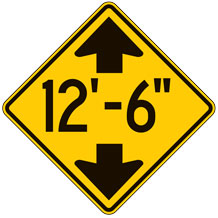
Underpass/Low Clearance

Divided Highway Begins
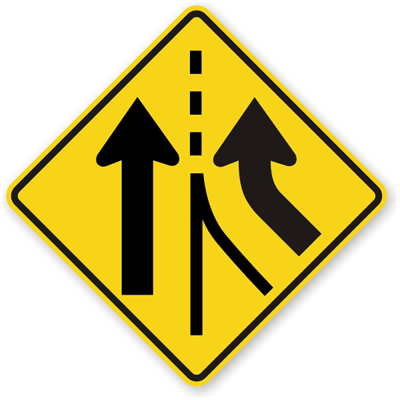
Added Lane

Reduced Lane
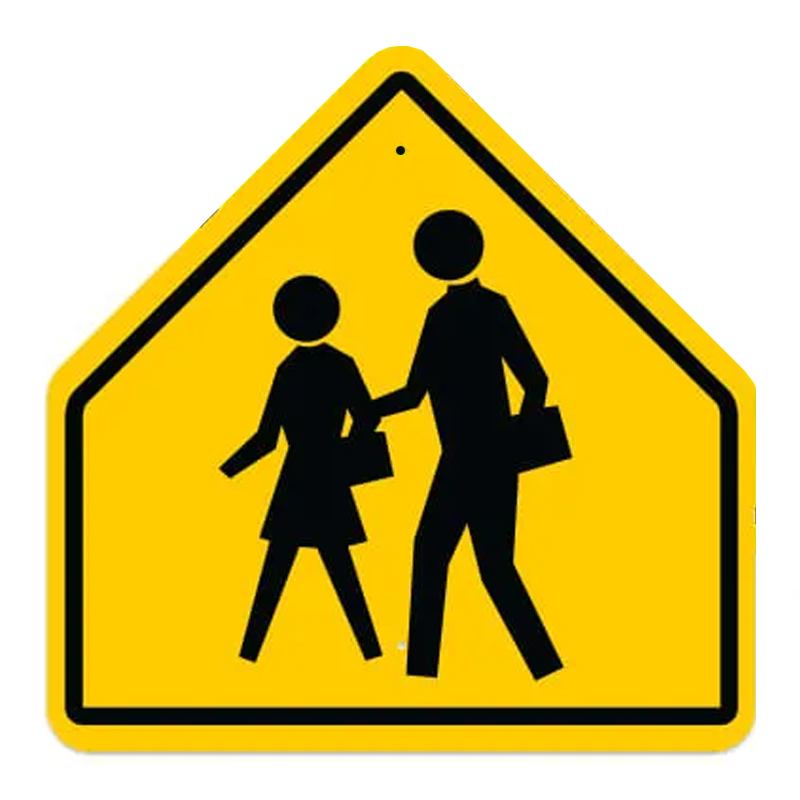
School Crossing
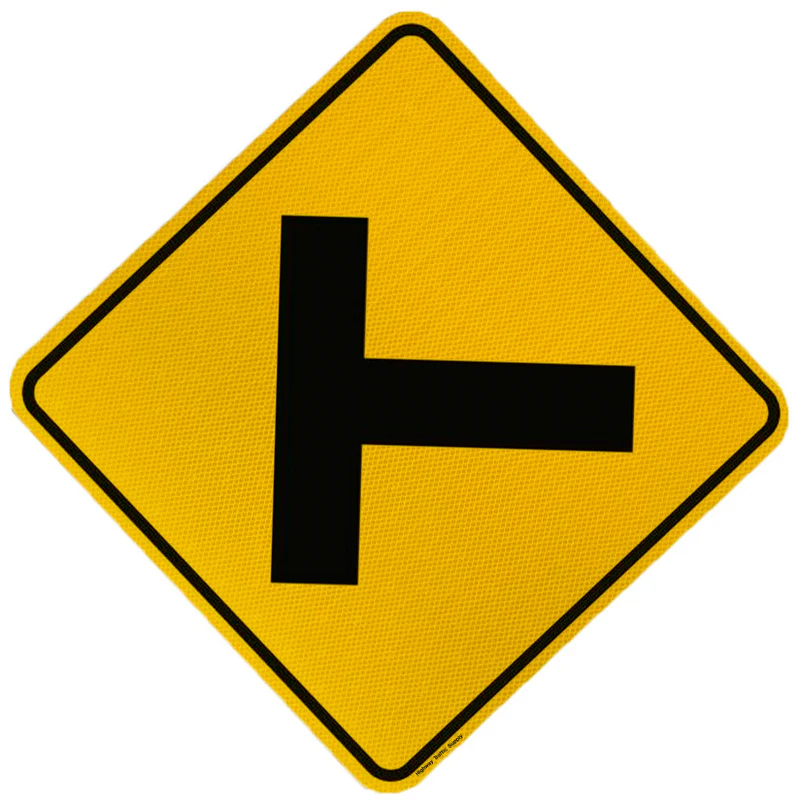
Side Road
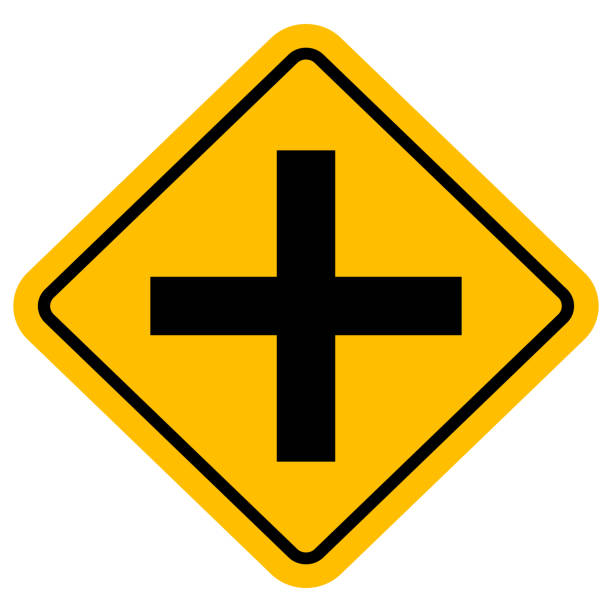
Crossroad Ahead

Turn
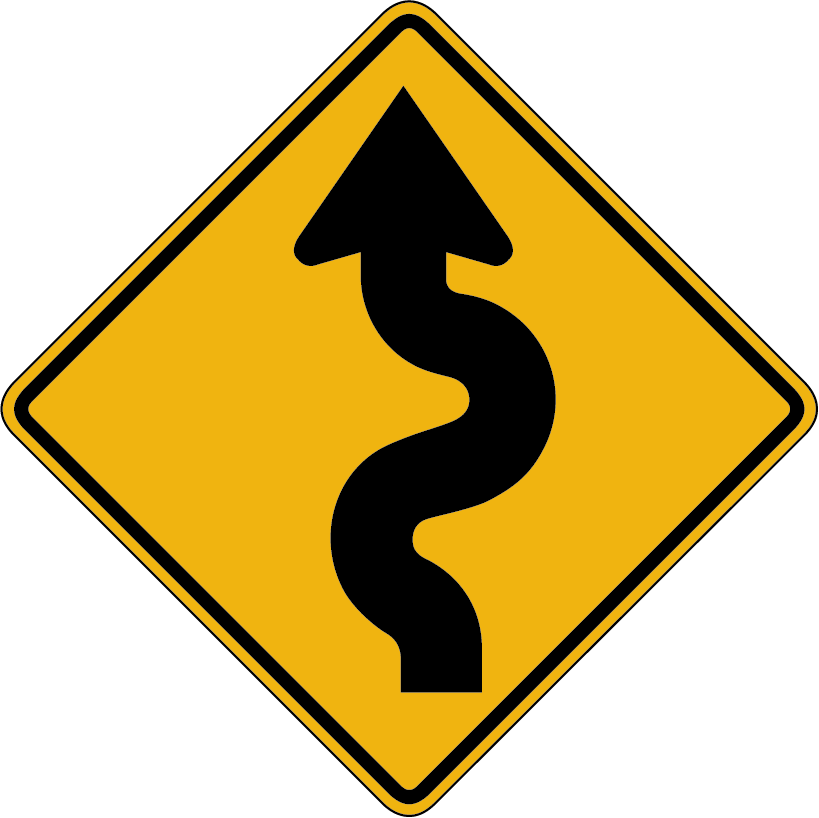
Winding Road
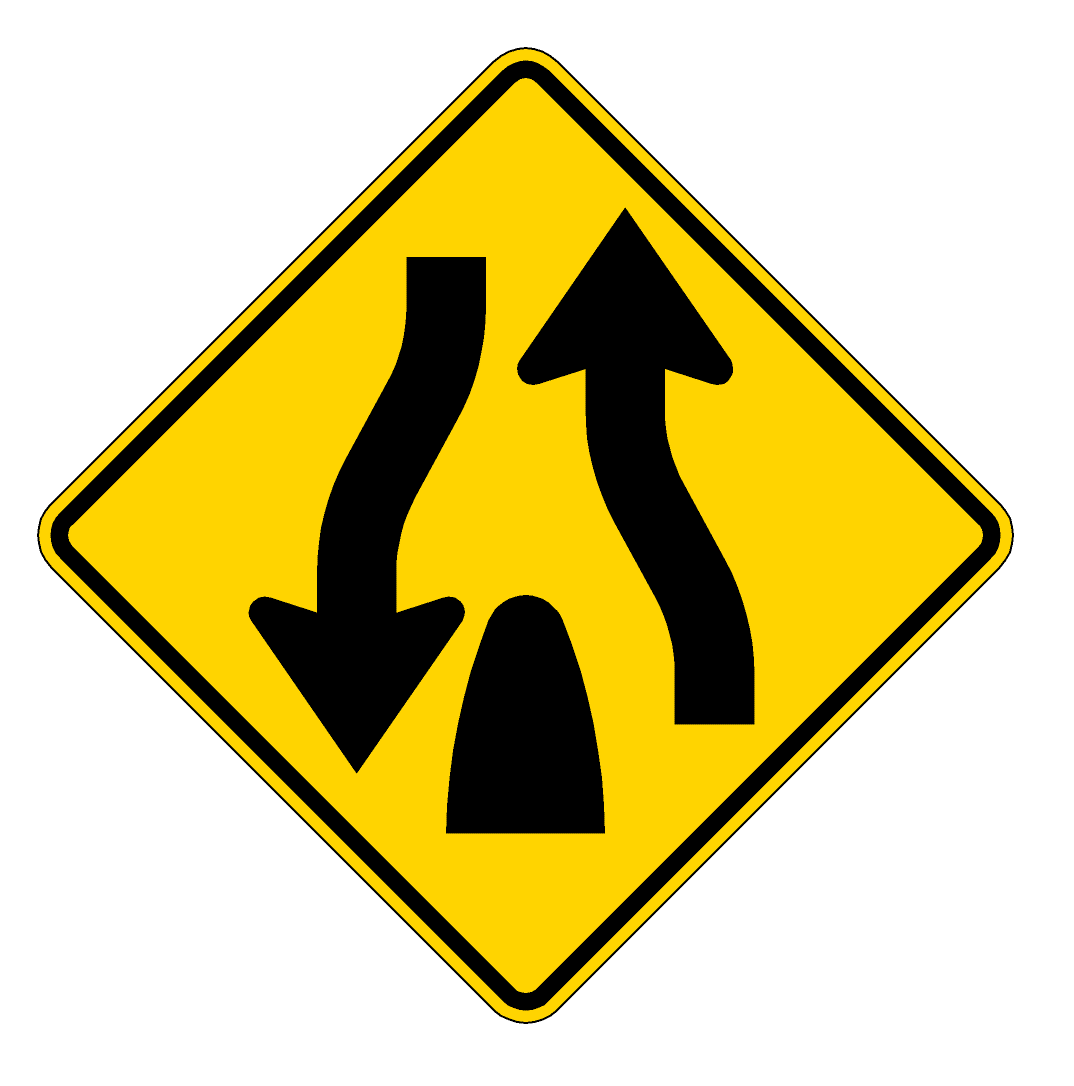
Median will end soon
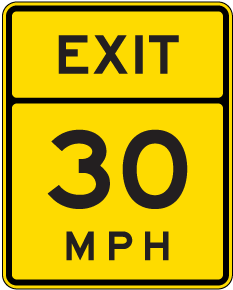
Highway exit/Suggested speed
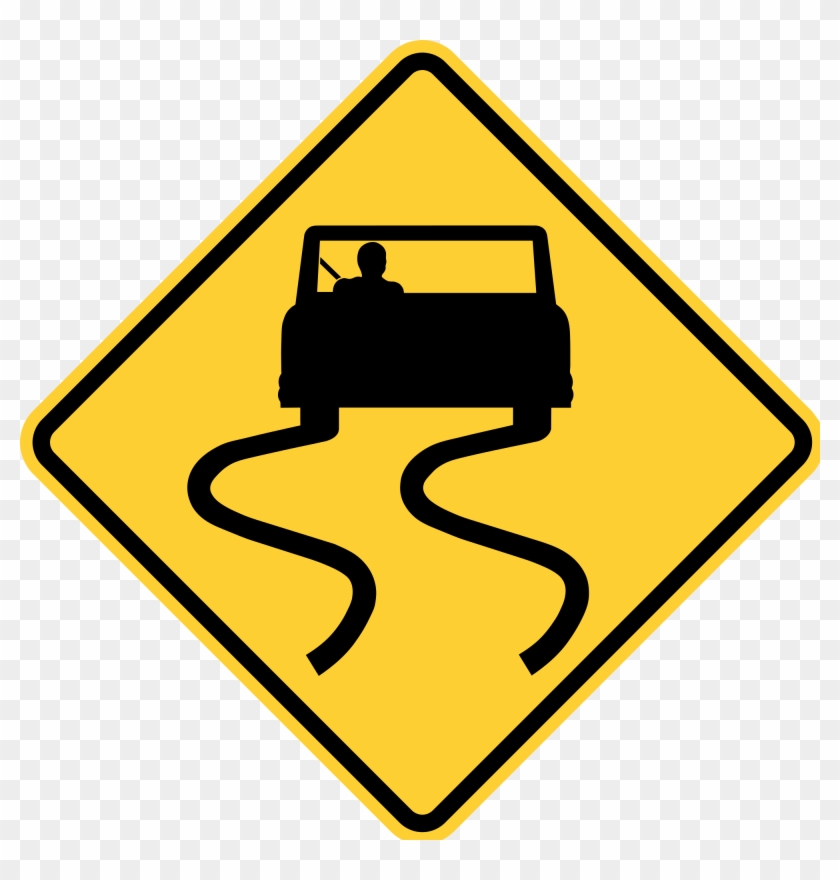
wet road may be slippery
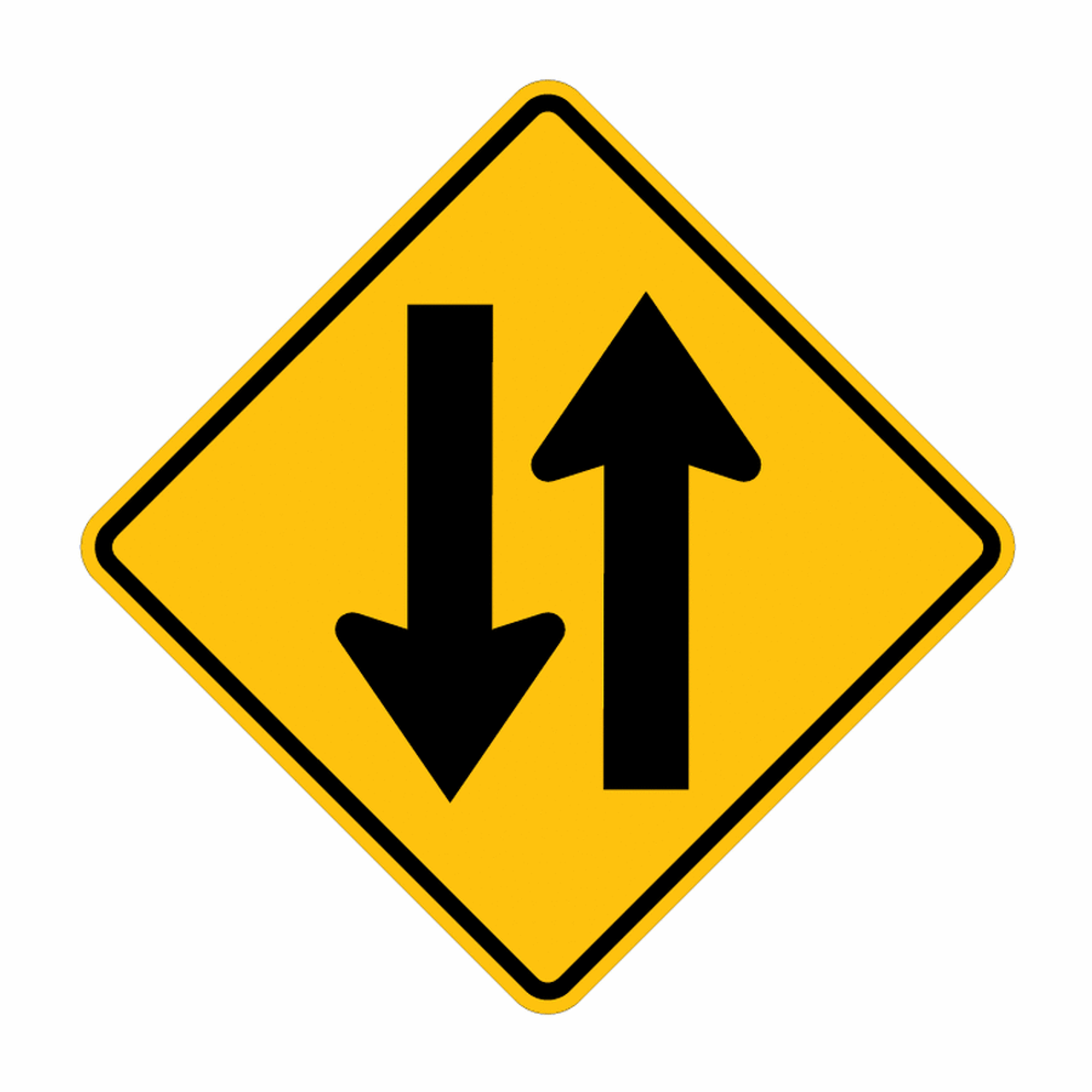
Two way traffic

Gradual Curve
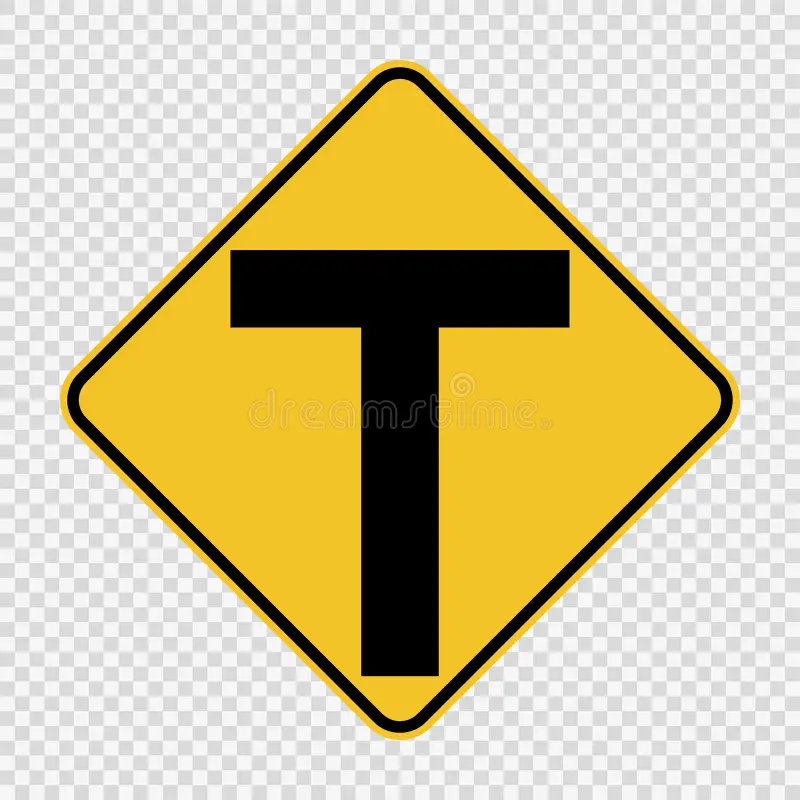
T-intersection
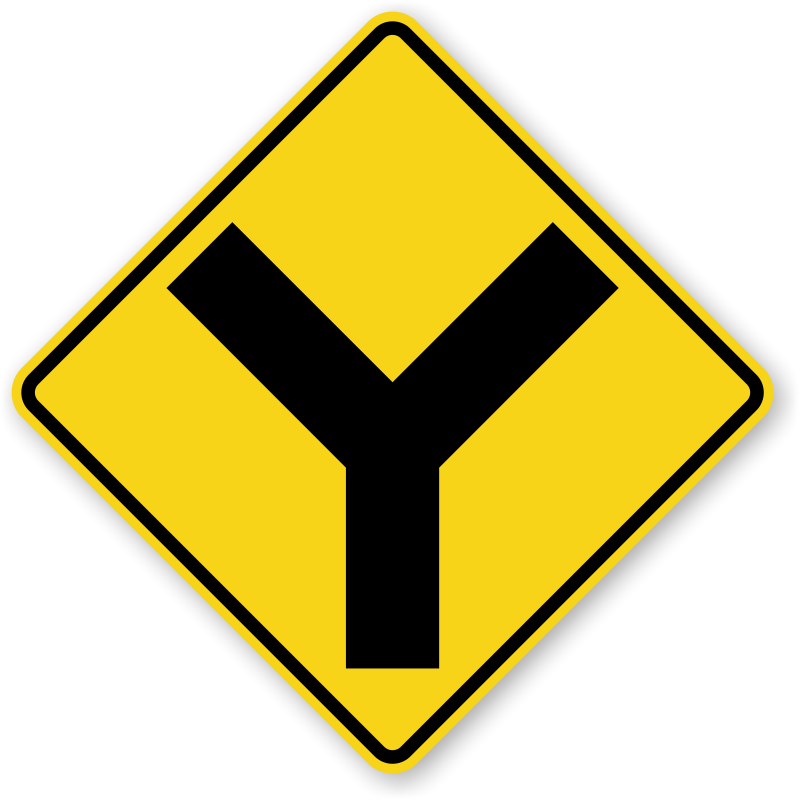
Y-intersection

Sharp Curve
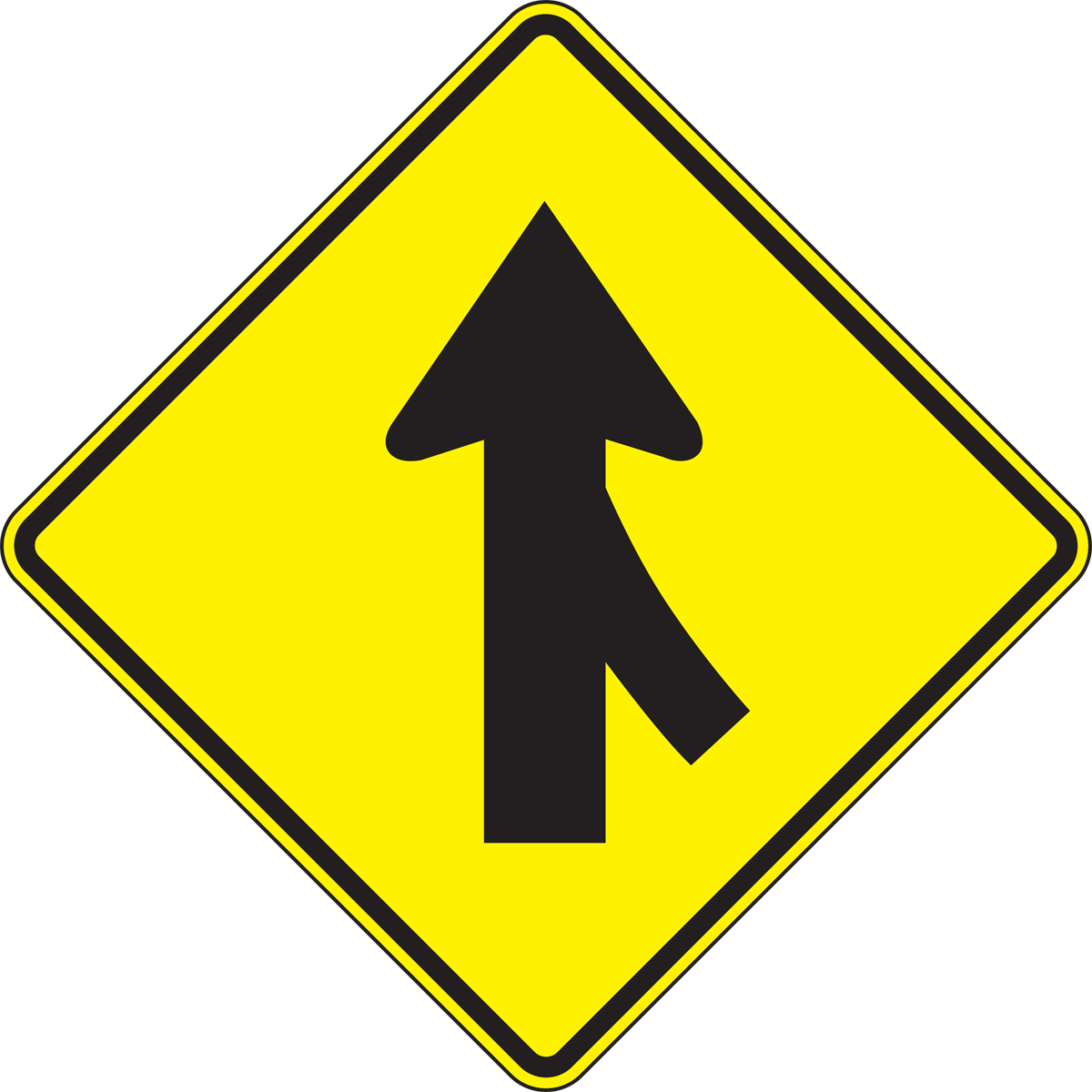
Lanes Merging
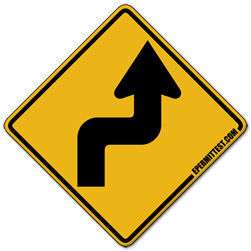
Road will turn right, then left
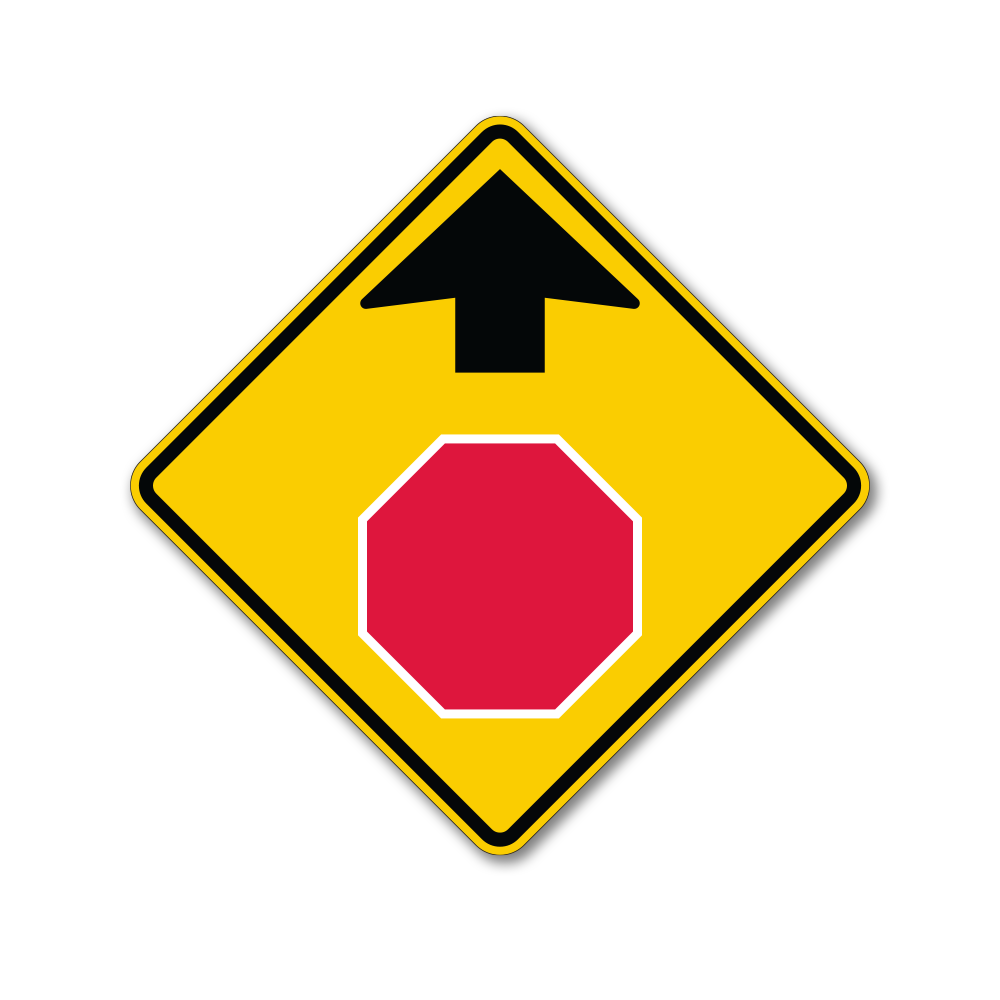
Stop Ahead
Broken Yellow Lines
only pass when safe
Broken White Lines
dividing multiple lanes in the same direction
Center Lanes
in the middle of two-way roads; used for left turns and not to be driven in for more than 200 feet
Double Yellow Lines
Should not be crossed
Solid & Broken Line Combo
okay to pass from broken-line side
Crosswalks
painted across road to indicate pedestrian crossing areas; vehicle must stop before them
Stop Lines
Vehicle must stop before the line at an intersection
Highways
Vehicles on highway have right of way
Use on-ramp to get up to highway speed
Enter and use far-right lane until you’ve reached highway speed
Go with speed of traffic of the lanes you moved into
Get into far-right lane for slower traffic and when preparing to exit
Exit signs are usually 1,000 ft before exit
Use exit ramp to slow down to the speed of the road you will enter
Highway Hypnosis
Operating a vehicle with less than full consciousness due to fatigue or other factors.
Ways to Avoid Highway Hypnosis
Stopping every two hours or 100 miles
Not driving more than eight hours a day
Continually shifting your eyes
Passing
Pass primarily on the left (passing on the right IS legal in Texas). Stay to the right unless passing
Do NOT pass when…
Pavement markings are a solid line
You are within 100 ft of a railroad crossing
You are within 100 ft of an intersection
You are within 100 ft of a bridge or tunnel
You are on a hill
When being passed…
Don’t speed up
Stay in your lane
Move to the right (if being passed on the left)
Make sure there’s space for the passing vehicle
Do NOT Park
Next to a car that’s already parked or stopped on the side of the street
On a sidewalk or crosswalk
In an intersection
Between a safety zone and the curb or within 30 feet of a place on the curb
immediately opposite a safety zone
Along or opposite any evacuation or obstruction if it would obstruct traffic
On a bridge, raised structure on a highway, or in a highway tunnel
On a railroad track
Wherever a sign tells you not to
Do NOT Park (cont.)
(cont.)
In front of someone’s private or public driveway
Within 15 ft. of a fire hydrant
Within 20 ft. of an intersection or crosswalk
Within 30 ft. of any flashing signal, yield sign, stop sign, or other traffic control signals
on the side of the road
Within 20 ft. of the driveway to a fire station or within 75 ft. opposite the entrance of a fire station
Within 50 ft. of a railroad crossing
Parking on Highway
Don’t, if possible
Leave room for others to pass you
Make sure people can see you from at least 200 ft. in both directions
Leave your parking lights on or your headlights on dim if at night
Accessible Parking Spots
Require an accessible parking license plate or removable windshield card
Removable windshield card to be used only when driving the person for whom the
card was given
Parking without an accessible parking placard or license plate can result in fines and
community service
Alcohol Legal Limit (under 21)
You cannot legally have any trace of alcohol in your system while driving
Alcohol Legal Limit (21 or older)
The legal BAC (Blood Alcohol Concentraction) limit = 0.08%
DUI (Driving Under the Influence)
In Texas, minors (anyone under 21) are considered guilty of this offense if they drive with any amount of alcohol or drugs in their system